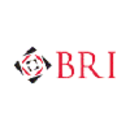About Building Research & Information
BRI is a research journal that focuses on buildings, building stocks and their supporting systems.

BUILDING RESEARCH & INFORMATION ( BRI ) is a research journal that focuses on buildings, building stocks and their supporting systems. It publishes original research, information papers, book reviews and commentaries. Unique to BRI is a holistic and transdisciplinary approach to buildings, which acknowledges the complexity of the built environment and other systems over their life.
Published articles utilize conceptual and evidence-based approaches which reflect the complexity and linkages between culture, environment, economy, society, organisations, quality of life, health, well-being, design and engineering of the built environment. All submitted manuscripts are subject to initial appraisal by the Editors, and, if found suitable for further consideration, to highly rigorous, double-blind peer review by independent, anonymous expert referees.
BRI 's wide scope embraces:
- SUSTAINABILITY & CLIMATE CHANGE: impacts on ecologies, resources (water, energy, air, materials, building stocks), sustainable development (social, economic, environmental and natural capitals) and climate change (mitigation and adaptation)
- PERFORMANCE & IMPACTS: the (design, technical, social, organisational, economic) performance, impacts, assessment, contributions, improvement and value of buildings, building stocks and related systems
- CAPABILITIES: Understanding the capabilities and motivations of occupants, their practices and behaviours. Exploring the supply chain's capabilities to address stakeholders' needs, improve the performance of buildings and building stocks, provide stewardship, and to protect public / societal interests.
- SOCIETAL DEMANDS: defining and exploring the changing demands and aspirations for architectural design, development and property. Topics include low-energy, regenerative design, retrofit, thermal comfort, longevity and obsolescence, space standards.
- POLICY: formulation of public policy; research, academic and innovation capabilities; organisational structures and networks; engagement between research users, policy makers and practitioners to effectively support the above scope and objectives.
Featured articles and news
The UK's Modern Industrial Strategy: A 10 year plan
Previous consultation criticism, current key elements and general support with some persisting reservations.
Building Safety Regulator reforms
New roles, new staff and a new fast track service pave the way for a single construction regulator.
Architectural Technologist CPDs and Communications
CIAT CPD… and how you can do it!
Cooling centres and cool spaces
Managing extreme heat in cities by directing the public to places for heat stress relief and water sources.
Winter gardens: A brief history and warm variations
Extending the season with glass in different forms and terms.
Restoring Great Yarmouth's Winter Gardens
Transforming one of the least sustainable constructions imaginable.
Construction Skills Mission Board launch sector drive
Newly formed government and industry collaboration set strategy for recruiting an additional 100,000 construction workers a year.
New Architects Code comes into effect in September 2025
ARB Architects Code of Conduct and Practice available with ongoing consultation regarding guidance.
Welsh Skills Body (Medr) launches ambitious plan
The new skills body brings together funding and regulation of tertiary education and research for the devolved nation.
Paul Gandy FCIOB announced as next CIOB President
Former Tilbury Douglas CEO takes helm.
UK Infrastructure: A 10 Year Strategy. In brief with reactions
With the National Infrastructure and Service Transformation Authority (NISTA).
Ebenezer Howard: inventor of the garden city. Book review.
The Grenfell Tower fire, eight years on
A time to pause and reflect as Dubai tower block fire reported just before anniversary.
Airtightness Topic Guide BSRIA TG 27/2025
Explaining the basics of airtightness, what it is, why it's important, when it's required and how it's carried out.
Construction contract awards hit lowest point of 2025
Plummeting for second consecutive month, intensifying concerns for housing and infrastructure goals.
Understanding Mental Health in the Built Environment 2025
Examining the state of mental health in construction, shedding light on levels of stress, anxiety and depression.





















